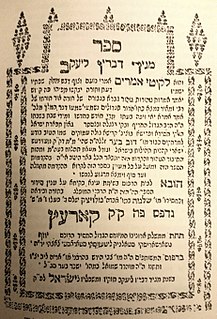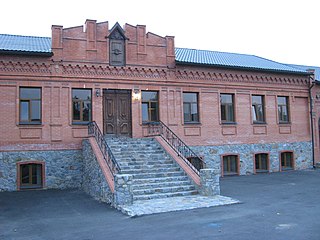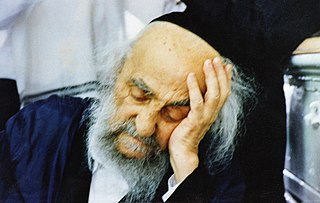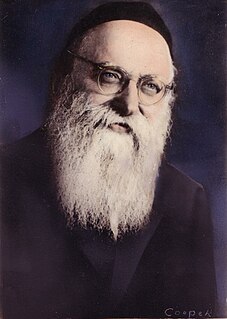Berditchev Hasidim, also known in Yiddish as Berditchiver Hasidim, originated in the town of Berdychiv, which over the years was under the control of Lithuania, Poland, Russia, and Ukraine.

Hasidism, sometimes Hasidic Judaism, is a Jewish religious group. It arose as a spiritual revival movement in contemporary Western Ukraine during the 18th century, and spread rapidly throughout Eastern Europe. Today, most affiliates reside in Israel and the United States. Israel Ben Eliezer, the "Baal Shem Tov", is regarded as its founding father, and his disciples developed and disseminated it. Present-day Hasidism is a sub-group within Ultra-Orthodox ("Haredi") Judaism, and is noted for its religious conservatism and social seclusion. Its members adhere closely both to Orthodox Jewish practice – with the movement's own unique emphases – and the traditions of Eastern European Jews, so much so that many of the latter, including various special styles of dress and the use of the Yiddish language, are nowadays associated almost exclusively with Hasidism.
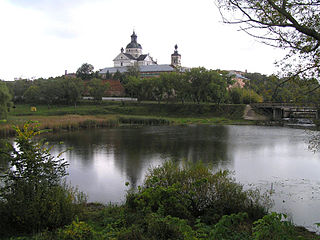
Berdychiv is a historic city in the Zhytomyr Oblast (province) of northern Ukraine. Serving as the administrative center of the Berdychiv Raion (district), the city itself is of direct oblast subordinance, and does not belong to the district. It is 44 km (27 mi) south of the oblast capital, Zhytomyr. Its population is approximately 76,711 (2017 est.).

Lithuania, officially the Republic of Lithuania, is a country in the Baltic region of Europe. Since its independence, Lithuania is considered to be one of the Baltic states. It is situated along the southeastern shore of the Baltic Sea, to the east of Sweden and Denmark. It is bordered by Latvia to the north, Belarus to the east and south, Poland to the south, and Kaliningrad Oblast to the southwest. Lithuania has an estimated population of 2.7 million people as of 2019, and its capital and largest city is Vilnius. Other major cities are Kaunas and Klaipėda. Lithuanians are Baltic people. The official language, Lithuanian, along with Latvian, is one of only two living languages in the Baltic branch of the Indo-European language family.
During the 18th century Berditchev was an important center of Hasidism. Rabbi Levi Yitzchok of Berditchev (1740-1810), also known as the Kedushat Levi in honor of his great Talmudic and pietistic work, became the inspiration for subsequent generations of Berditchiver Hasidim.
In Judaism, a rabbi is a teacher of Torah. The basic form of the rabbi developed in the Pharisaic and Talmudic era, when learned teachers assembled to codify Judaism's written and oral laws. The first sage for whom the Mishnah uses the title of rabbi was Yohanan ben Zakkai, active in the early-to-mid first century CE. In more recent centuries, the duties of a rabbi became increasingly influenced by the duties of the Protestant Christian minister, hence the title "pulpit rabbis", and in 19th-century Germany and the United States rabbinic activities including sermons, pastoral counseling, and representing the community to the outside, all increased in importance.

Rabbi Levi Yitzchok of Berditchev (1740–1809), also known as the holy Berdichever, and the Kedushas Levi, was a Hasidic master and Jewish leader. He was the rabbi of Ryczywół, Żelechów, Pinsk and Berdychiv, for which he is best known. He was one of the main disciples of the Maggid of Mezritch, and of his disciple Rabbi Shmelke of Nikolsburg, whom he succeeded as rabbi of Ryczywół.

The Talmud is the central text of Rabbinic Judaism and the primary source of Jewish religious law (halakha) and Jewish theology. Until the advent of modernity, in nearly all Jewish communities, the Talmud was the centerpiece of Jewish cultural life and was foundational to "all Jewish thought and aspirations", serving also as "the guide for the daily life" of Jews.
Today, there are several synagogues called Berditshev, of which the rabbis of some are called Berditshever Rebbes.

